 Be Inspired Blog - Arizona
Be Inspired Blog - Arizona
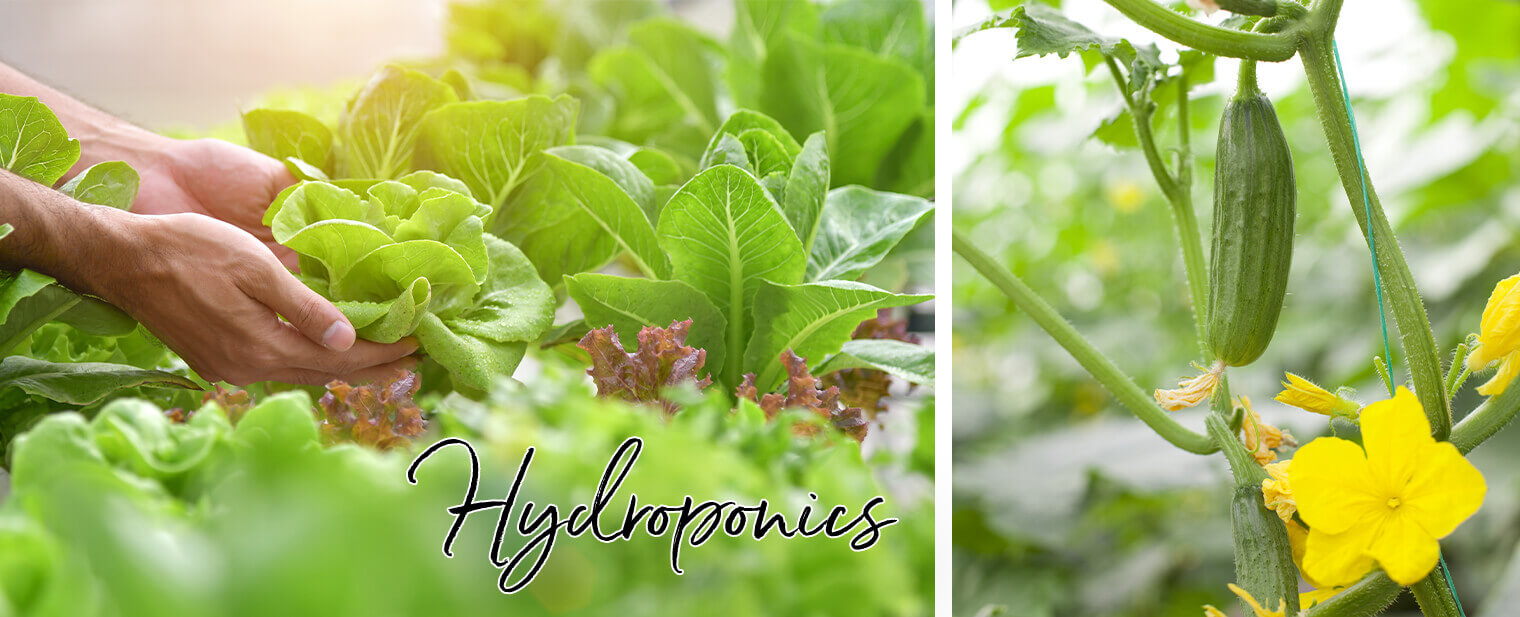
Get Out of the Dirt with Hydroponic Gardening
What do your home and the International Space Station have in common? They’re both ideal locations to experiment with hydroponic gardening.
Hydroponic systems are soil-free, growing plants instead in water that has been enriched with vital nutrients. The setup is extremely water-efficient and can be done in the smallest of spaces, making it ideal for tight living spaces and offices, or areas with poor soil quality.
Even if you do have ideal soil and space for gardening, a hydroponic setup encourages crops to grow an estimated 20-percent faster, with crop yield almost 25-percent higher than traditional garden and container growth.
Pick Your Hydroponic Gardening Setup
There are six different basic types of hydroponic systems: wick, water culture, ebb and flow, drip, nutrient film technique (NFT) and aeroponic. There are hundreds of variations, but all will use one, or several, of these systems as their base. Here is a quick explanation of what makes them work.
1. Wick Setup
The wick system is by far the simplest type of hydroponic gardening system. This is a passive system, which means there are no moving parts. The nutrient solution is drawn into the growing medium from the reservoir with a wick.
Instead of soil, this system can use a variety of growing media to house the root structure. Perlite, Vermiculite, Pro-Mix and Coconut Fiber are among the most popular.
The biggest drawback of this system is that plants that are large or use large amounts of water may use up the nutrient solution faster than the wick(s) can supply it.
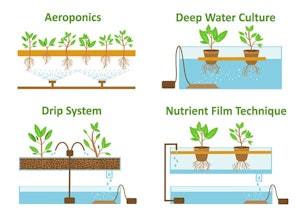
2. Water Culture
Water culture is the system of choice for growing leaf lettuce, which are fast growing and water loving plants - making them an ideal choice for this type of hydroponic gardening system.
This type of hydroponic system is also great for the classroom and popular with teachers. A very inexpensive system can be made out of an old aquarium or other water tight container.
The biggest drawback of this kind of system is that it doesn't work well with large or long-term plants.
3. Ebb and Flow
The ebb and flow system works by temporarily flooding the grow tray with nutrient solution and then draining the solution back into the reservoir.
This action is done with a submerged pump that is connected to a timer. When the timer turns the pump on the nutrient solution is pumped into the grow tray. When the timer shuts the pump off the nutrient solution flows back into the reservoir. This process will take some customization depending on the types of plants, ambient humidity and temperature, and type of growing medium used for the root structure.
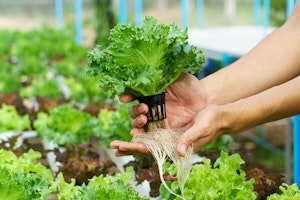
The grow tray can also be customized – users can fill the entire tray with a growing medium, or place individual potted plants filled with the medium inside the tray. Using individual pots makes it easier to move plants around, or even move them in and out of the system entirely.
The main disadvantage of the ebb and flow system is that it is vulnerable to power, pump and timer failures, and the roots of your plants dry out quickly if the watering cycle is interrupted. This problem can be alleviated somewhat by using a growing media that retains more water like vermiculite or coconut fiber.
4. Drip Systems
Drip systems are likely the most widely used type of hydroponic gardening system in the world. Operation is simple; a timer controls a submersed pump which deposits the nutrient solution onto the base of each plant through a small drip line. In a recovery drip system the excess nutrient solution that runs off is collected back in the reservoir for re-use. The non-recovery system does not collect the run off.
A recovery system uses nutrient solution a bit more efficiently since it reuses the excess solution. You can also use a more inexpensive timer since it doesn’t require precise control of the watering cycles.
The non-recovery system must be precise and allow for the watering cycles to be adjusted to minimize the runoff – but you can set and forget the nutrient solution until the levels run low. A recovery system will require adjusting the nutrient strength and pH of the solution as the water is recycled.
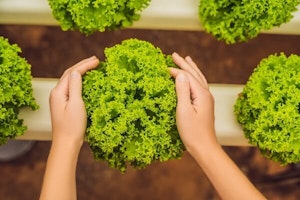
5. Nutrient Film Technique (NFT)
NFT is the kind of hydroponic gardening system most people think of when they think about hydroponics. NFT systems have a constant flow of nutrient solution so no timer is required for the submersible pump. Instead the nutrient solution is steadily pumped into the growing tray and flows over the roots of the plants before draining back into the reservoir.
There is usually no growing medium used other than air, which saves the expense of replacing the growing medium after every crop. Instead the plant is supported in a small plastic basket with the roots dangling into the nutrient solution.
The main disadvantage to NFT is its susceptibility to power outages and pump failures. The roots dry out very quickly when the flow of nutrient solution is interrupted.
6. Aeroponic
The aeroponic system is probably the most high-tech type of hydroponic gardening. Like the NFT system, the growing medium is primarily air with the roots hanging in the air and misted with nutrient solution (visualize the produce section at your local grocery store) every few minutes. Because the roots are exposed to the air they will dry out rapidly if the misting cycles are interrupted.
A timer controls the nutrient pump much like other types of hydroponic systems, except the aeroponic system needs a short cycle timer that runs the pump for a few seconds every couple of minutes.
Which Hydroponic Gardening System Is Best For Beginners?
The three most basic setups recommended for beginners are the wick, water culture, and ebb and flow. All three of these systems can be built from individual components purchased separately, or you can buy a complete setup kit from online retailers or in a hydroponics store.
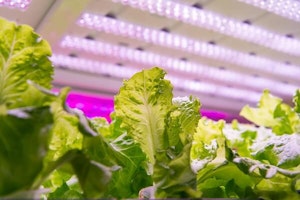
Do You Need Extra Lights?
If you have a sunroom or will be doing your hydroponic gardening outdoors, your setup will thrive just fine on its own. However if you’ll be setting up indoors and away from the natural light, a little assistance is necessary.
There are four types that you can read more about:
- Incandescent lamps
- Fluorescent lamps
- High Intensity Discharge (HID) lamps
- LED lights
The main factors to consider when shopping for a grow light system are budget, plant type, enclosure size, and ventilation available. Other factors, such as electricity cost, upfront costs, amount of use, and the native environment can vary greatly.
What Should You Start Growing In Your Hydroponic Gardening System?
Just about any plant can be grown hydroponically, but for beginners it’s best to start small. The easiest choices are herbs and vegetables that grow quickly, require minimal maintenance and don’t require a broad range of nutrients.
Fast-growing plants are especially important for a new system to assess how well it works and make any necessary adjustments. Maintenance-free plants allow you to focus on your system while still learning the ins and outs. If you plan on growing a variety of plants, it’s also important to make sure that they are similar in their nutrient requirements so that they grow well together.
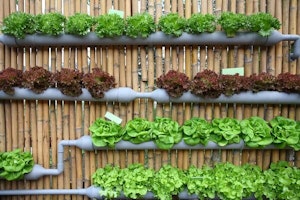
Lettuce
Lettuce is the easiest vegetable to grow hydroponically. It grows quickly, doesn’t take up much space and is easy to maintain.
Germinate seeds in a peat moss plug before transferring into the growing tray of your hydroponic gardening setup. Loose leaf varieties can be placed six inches apart, but any varieties that grow a firm head will need 12 inches.
Hydroponic lettuce prefers a pH of 5.5 to 6.5 and should receive between 10 and 14 hours of light per day. Depending on the type you are growing, your lettuce should be ready to harvest in about six weeks.
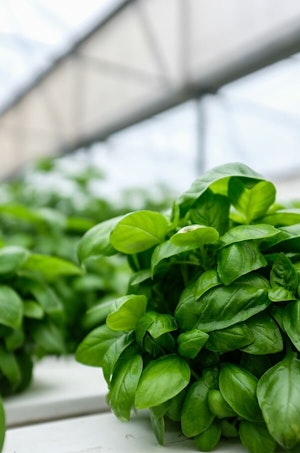
Basil
Any variety of basil will grow in a hydroponic garden, but you’ll have to decide whether you’re growing from seeds or starts. Basil seeds are cheap and can be germinated in three to seven days in a peat moss plug. Starts will be more expensive, but are already established. You can purchase a soil start and transplant it to your hydroponic setup if you prefer.
Hydroponic basil plants should be given nine to 12 inches of space between them to provide plenty of room to grow out. They prefer a pH of 5.5 to 6.5 and needs 14 to 16 hours a day of light. Prune and harvest your basil regularly to promote new growth and increase your overall yield.
Cucumbers
Cucumber seeds are easy to germinate, and the seedlings grow quickly, so starting from seed is recommended. Any variety can be grown hydroponically, but keep in mind that a sprawling vine type will require much more room than bush varieties.
Cucumber plants will need to be placed two to six feet apart depending on variety. They prefer a pH of 5.0 to 6.0 and should receive 12 to 14 hours of light each day. If you are doing your hydroponic gardening indoors, you will also need to manually pollinate your plants.
The two main ways to pollinate include using a cotton swab or small brush to run the inside of a male flower and transfer the pollen to a female flower – or cut the male flowers from the plant and rub them directly against the female flowers.
Cucumber plants should be ready to harvest between 50 and 70 days from sprouting depending on variety.
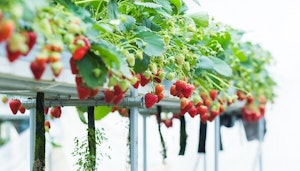
Strawberries
Due to their high water content, strawberries thrive in hydroponic gardens! Starting from seed is not recommended, as the plants can take up to three years before they begin producing fruit.
You can transplant established plants from the soil into your hydroponic garden, but make sure to rinse the roots thoroughly and dipping in fungicide before planting them. After the plants are established they will begin to put out runners. Those can be cut off and placed into moist peat moss to begin growing their own roots.
Hydroponic strawberries need six to eight inches between plants in order to spread out. They prefer a pH of 5.5 to 6.5 and will need 14 to 16 hours of light each day.
Similar to cucumbers, strawberries will need some human assistance to successfully pollinate the flowers and produce fruit. The berries will be ready for harvesting in eight to nine weeks, or when bright red.
Start Your Adventure In Hydroponic Gardening with SummerWinds
Looking for some advice on the best setup for your space? Or maybe you’re ready to pick up a few plant starts and give it a go? Let our Trusted Garden Advisors help you pick out the plant starts and amendments you need to succeed!

